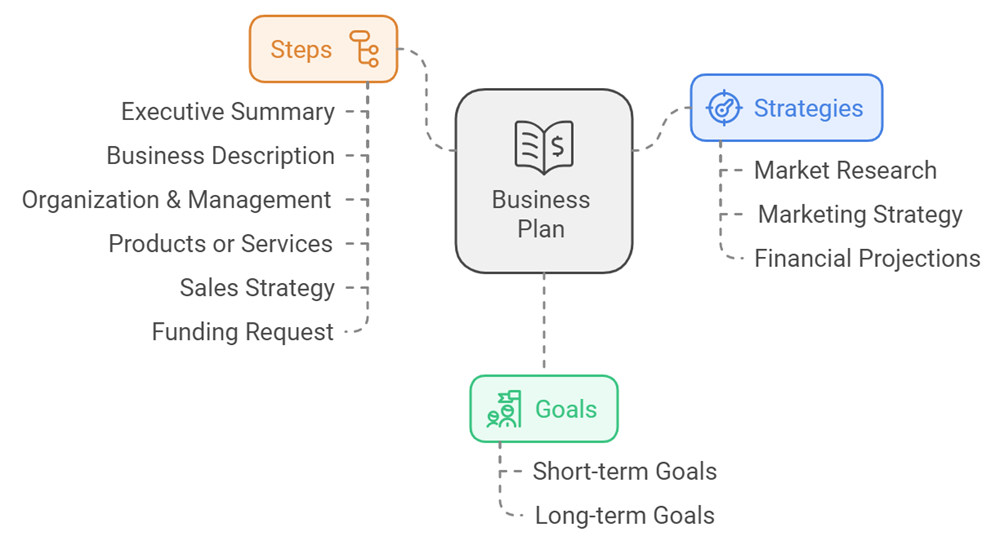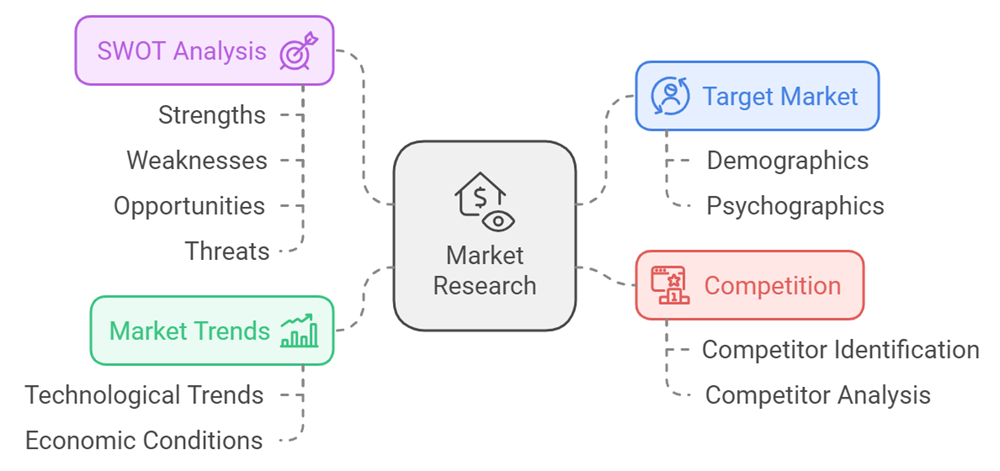From Idea to Reality: A Beginner’s Guide to Writing a Winning Business Plan
Starting a business requires careful planning, and one of the most important steps is creating a solid business plan. Your business plan serves as a roadmap, outlining your goals, strategies, and the steps you’ll take to turn your idea into a successful venture. In this guide, we’ll break down writing a winning business plan for beginners that will help you launch and grow your business.

Why You Need a Business Plan
A business plan is essential for several reasons:
Clarity: It helps you define your business goals and strategies clearly.
Direction: It acts as a roadmap for starting, managing, and growing your business.
Funding: Investors and lenders often require a business plan to assess your potential.
Decision-Making: It guides you in making informed decisions at every stage of your business journey.
Whether you’re just starting out or looking to grow, having a well-structured business plan is critical to your success.
Step-by-Step Guide to Writing a Winning Business Plan
Writing a winning business plan might sound complicated, but when broken down into clear steps, it becomes much more manageable. Here’s how you can go from idea to reality with a winning business plan:
1. Executive Summary
The executive summary is the most important section of your business plan. It provides a brief overview of your business, its objectives, and how you plan to achieve them.
What to Include:
Business Name: State your business name and the products or services you offer.
Mission Statement: Write a clear mission statement that describes the purpose of your business.
Business Objectives: List your short- and long-term goals.
Brief Summary: Provide an overview of your product/service, target market, and financial projections.
Tip: Although it’s the first section, it’s often easier to write the executive summary last, once you have completed the other parts of your plan.
2. Business Description
This section gives a detailed explanation of what your business does, the industry it operates in, and the specific problem your business aims to solve.
What to Include:
Industry Overview: Describe the industry you’re entering and current trends.
Business Overview: Explain what your business will offer (products/services) and how it fits into the market.
Business Structure: State whether your business will be a sole proprietorship, partnership, or limited liability company.
Business Location: Mention where your business will be based.
3. Market Research & Analysis
This section involves researching your target market to understand who your customers are, what they need, and how your business can meet those needs.
Steps to Conduct Market Research:
Identify Your Target Market: Who are your ideal customers (age, gender, income level)?
Study Your Competition: What other businesses are offering similar products or services?
Market Trends: Identify trends affecting your industry (e.g., technology, economic conditions).
SWOT Analysis: Conduct a SWOT analysis to determine your business’s Strengths, Weaknesses, Opportunities, and Threats.

4. Organization & Management
Here, you’ll describe the structure of your business and the team responsible for running it.
What to Include:
Business Structure: Define your business structure (e.g., sole proprietorship, partnership).
Management Team: Outline the key roles in your business and the people filling those roles. If it’s just you starting out, explain how you will handle different aspects of the business
Experience & Expertise: Highlight any experience or qualifications you or your team have that will contribute to the success of the business.
5. Products or Services
This section should describe the products or services your business offers in detail.
What to Include:
Product/Service Description: Provide a detailed description of each product or service.
Unique Selling Point (USP): Explain what makes your product/service different from competitors.
Pricing Strategy: How much will you charge for your products or services?
Product Lifecycle: Describe where your product is in its lifecycle (launch phase, growth phase, etc.).
Research & Development: If you’re creating a new product, explain the research process behind it.
6. Marketing & Sales Strategy
Your marketing and sales strategy will determine how you plan to attract and retain customers.
What to Include:
Marketing Plan: Outline how you plan to promote your business. Will you use social media, traditional advertising, or word-of-mouth?
Sales Strategy: Explain how you’ll sell your products or services (online, in-person, or both).
Customer Retention: Describe how you’ll keep customers coming back, such as loyalty programs or excellent customer service.
Budget: Include a marketing budget that covers all your promotional activities.
7. Financial Projections
Your business plan should include realistic financial projections that show how you expect the business to perform.
What to Include:
Startup Costs: List all the costs involved in starting your business (e.g., equipment, inventory, legal fees).
Revenue Projections: Estimate your projected income for the first year.
Expenses: Detail your fixed and variable expenses (rent, salaries, utilities).
Profit and Loss Forecast: Calculate expected profits after subtracting expenses from revenue.
Cash Flow Statement: Provide a cash flow forecast to show how you’ll manage income and expenses over time.
8. Funding Request (If Applicable)
If you need funding, this section is where you’ll outline how much capital you need, and what you’ll use it for.
What to Include:
Funding Amount: Specify exactly how much funding you need.
Purpose of Funding: Explain how the funds will be used (e.g., equipment, marketing, salaries).
Repayment Plan: If applying for a loan, include your repayment strategy and timeline.
9. Appendix
This section includes any additional information that might be useful to readers, such as:
Financial Statements: Attach financial projections.
Resumes: Include resumes of key team members.
Product Images: If applicable, include images of your products or services.
Bonus: Business Plan Template
To make things easier, here’s a FINANCIAL and NON-FINANCIAL business plan template you can download and customize for your business. Both templates cost N3,000
Conclusion: Turning Your Idea Into Reality
A business plan is the first step in turning your business idea into reality. Whether you’re just starting or looking for ways to expand, writing a business plan will help you stay organized, focus on your goals, and increase your chances of success.
